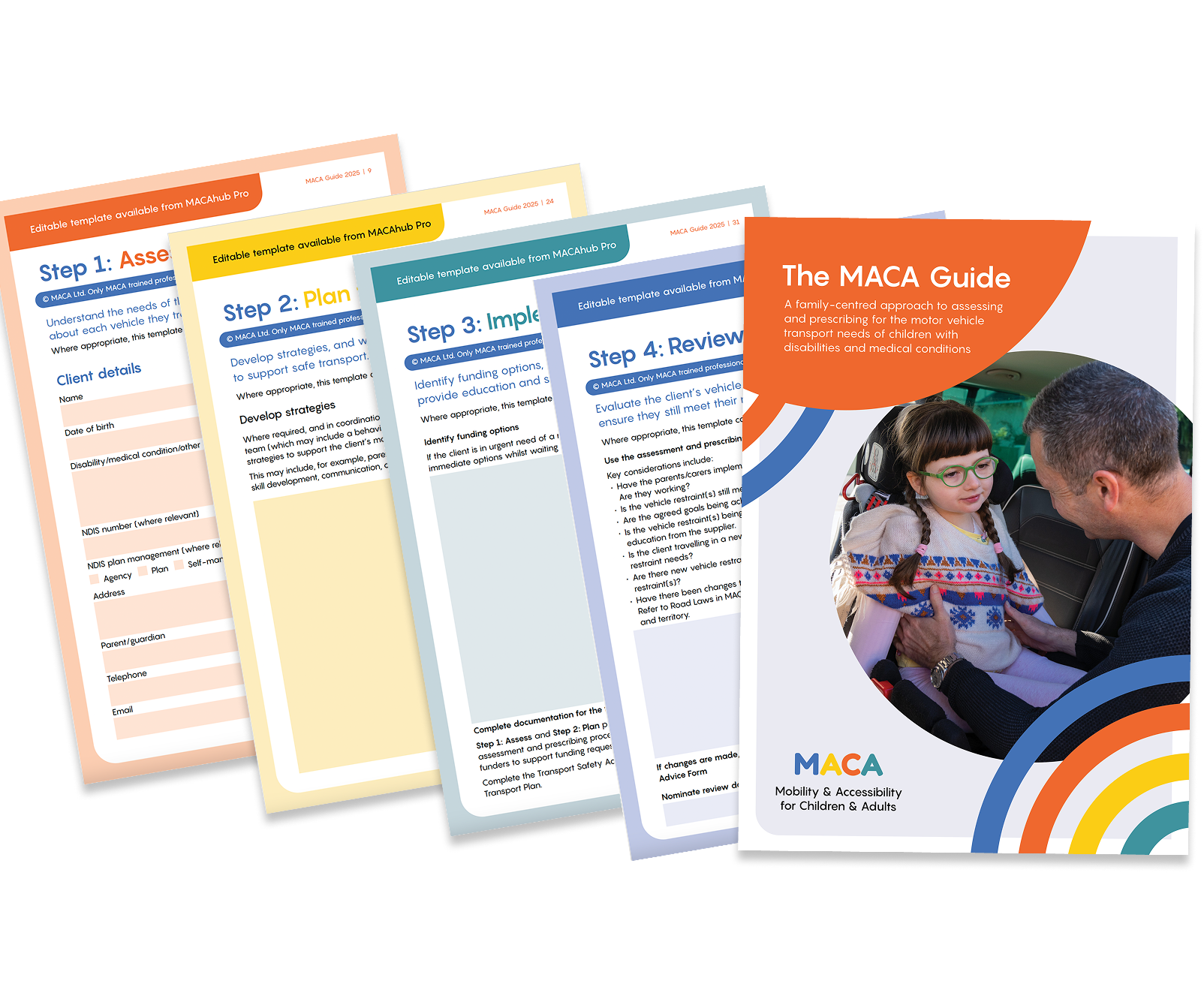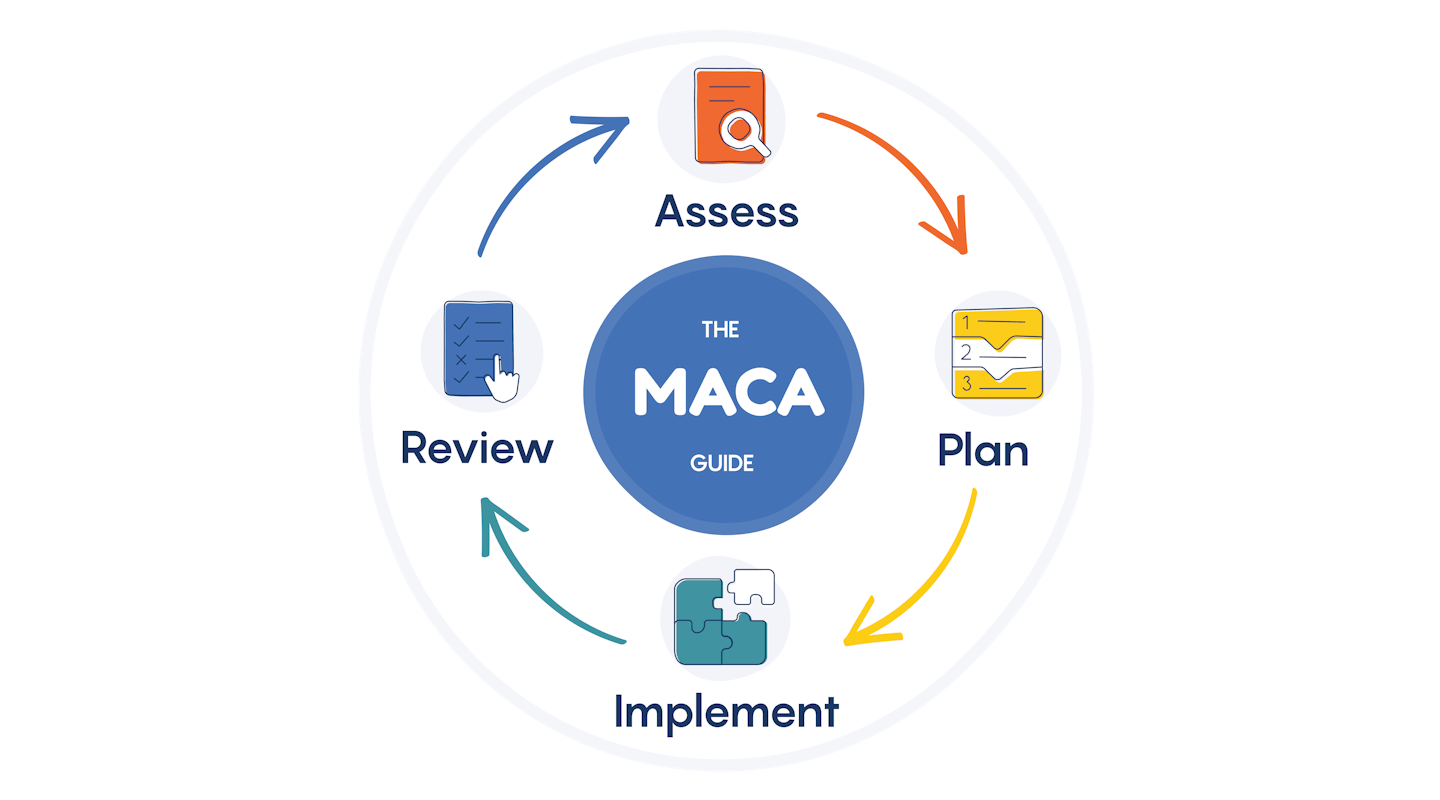
MACA Guide content
Based on best practice, standards/regulations, government policy and research, the MACA Guide has three parts:
Assessment and prescribing process
This outlines four steps in the assessing and prescribing process, including downloadable templates that can be adapted to individual needs. Working through this process helps prescribers to apply clinical reasoning to support motor vehicle transport.
Motor Vehicle Transport Plan
This plan provides families and carers with an essential record of their child’s motor vehicle transport needs. It assists with communicating transport needs and can be shared with other professionals.
Transport Safety Advice Form
The Transport Safety Advice Form documents the prescribed method of travel, the review period, and information about installation, safe use and parent/carer education.






